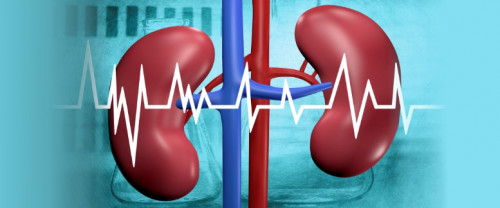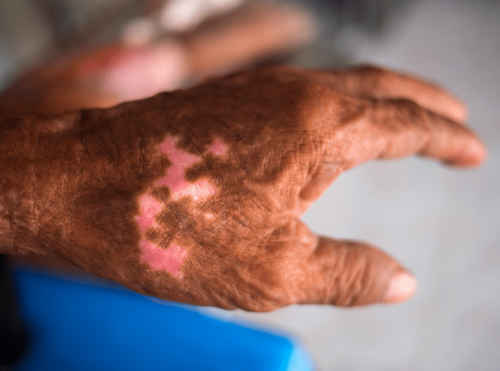Definition of Acute Renal Failure
Acute Kidney Injury (AKI) is sudden kidney damage that occurs within hours or days. AKI causes a buildup of waste products in the blood, making it difficult for the kidneys to maintain fluid balance in the body. AKI can also affect other organs such as the brain, heart, and lungs. AKI often occurs in patients who are in hospitals, in intensive care units, and especially in older adults. Acute Kidney Injury (AKI) is sudden kidney damage that occurs within hours or days. AKI causes a buildup of waste products in the blood, making it difficult for the kidneys to maintain fluid balance in the body. AKI can also affect other organs such as the brain, heart, and lungs. AKI often occurs in patients who are in hospitals, in intensive care units, and especially in older adults.
AKI was defined as an increase in serum creatinine of 0.3 mg / dL within 48 hours or a 50% increase in serum creatinine values within 7 days. Baseline serum creatinine is the baseline serum creatinine value. AKI onset starts from the first day when the serum creatinine value changes. The AKI stage was determined by the peak value of serum creatinine levels after AKI detection, with an increase of 1.5-1.9, 2.0-2.9, and ≥3 times from the baseline which were then classified as stages 1, 2, and 3.
What is the relationship between acute kidney failure and COVID-19?
AKI is one of the dangerous complications that can occur due to the COVID-19 disease caused by the SARS-Cov-2 virus. The causes of kidney problems in COVID-19 patients tend to vary, but there are 3 underlying relationships that COVID-19 infection can exacerbate kidney damage.
- First, the SARS-Cov-2 virus can cause cytopathic effects (changes in cell structure abnormalities) which can directly attack the kidneys. This is supported by the detection of Sars-Cov-2 PCR fragments in blood and urine in COVID-19 patients. Experts currently report that SARS-Cov-2 uses Angiotensin-Converting Enzyme II (ACE2) which is an enzyme found in the lungs and kidneys as a receptor for cell entry. The RNA sequence data in human tissue shows that the expression of ACE2 in the urinary organs (kidneys) is much higher (almost 100 times) compared to the respiratory organs (lungs). Therefore, kidney disorders can be caused by SARS-Cov-2 which enters cells through ACE2 which is widely expressed in the kidneys.
- Second, the specific immune effect induced by specific T lymphocytes (antibodies) that react with the SARS-Cov-2 virus can damage the kidneys.
- Third, SARS-Cov-2 virus-induced mediators have an indirect effect on kidney tissue, such as hypoxia (lack of oxygen levels in cells or tissues), and cause rhabdomyolysis (damage to muscle tissue that causes the release of myoglobin into the blood). Myoglobin is an iron and oxygen-binding protein found in skeletal muscle tissue. The presence of myoglobin in the blood can damage the kidneys. Symptoms include reddish dark urine, decreased urine output, weakness, and muscle aches. Early treatment with aggressive fluid replacement can reduce the risk of kidney damage.
Based on research conducted by Yichun Cheng et al, it should be noted that most COVID-19 patients who are hospitalized are at risk of developing AKI. Based on research conducted by Yichun Cheng et al, it should be noted that most COVID-19 patients who are hospitalized are at risk of developing AKI. Recent studies report that patients with severe COVID-19 will have detectable infections in urine samples. Furthermore, the entry of SARS-CoV-2 into the systemic circulation is also a key process leading to renal failure. Based on published data, the length of time between detection of SARS-CoV-2 in a blood sample and the occurrence of AKI is approximately 7 days.
Based on the above findings, it can be concluded that the cytopathic effect of SARS-CoV-2 on proximal tubular cells can cause AKI in COVID-19 patients. Therefore, more attention is needed to carry out early monitoring of kidney function in the urine of COVID-19 patients, especially patients with AKI to prevent accidental infections.
What tests are done to find out if you have acute kidney failure?
Assessment of kidney function can generally be known through several indicators. Currently, the most frequently used by clinicians is only creatinine from blood serum and enter into the calculation formula to get the number eGFR = estimated Glomerular Filtration Rate. Assessment of kidney function can generally be known through several indicators. Currently, the most frequently used by clinicians is only creatinine from blood serum and enter into the calculation formula to get the number eGFR = estimated Glomerular Filtration Rate.
In fact, the guideline for determining kidney function from journals and International Consensuses such as KDIGO 2012 Clinical Practice Guideline for the Evaluation and Management, states that several other indicators are needed in assessing kidney function, namely by measuring microalbuminuria, ACR, and urinary creatinine.
The Sinocare ACR Analyzer is one of the flagship products of Sinocare, China's largest rapid test company - POCT. Is a tool to measure the Albumin to Creatinine Ratio which is used practically with only 0.8 µL of urine. The Sinocare ACR Analyzer is intended to be used with the mALB / Cr kit reagent to quantitatively determine microalbuminuria, creatinine, and ACR (microalbuminuria to creatinine ratio) in a urine sample. This tool is only for in vitro diagnostic use (IVD) which is included in the category of point-of-care-test as a tool for diagnosing kidney disease or function.
The Sinocare ACR Analyzer has several advantages including, a practical measurement process because the reagent only needs to be inserted into the instrument and then allowed to take measurements automatically for 6.8 minutes. The Sinocare ACR Analyzer will make the patient more comfortable in taking samples because there is no pain, only using urine with a small sample volume (0.8 µL). Also, the Sinocare ACR Analyzer can be placed in a small room because it does not take up much space, and the Sinocare ACR Analyzer has a fairly lightweight of 6.5 kg.
Also Read: EARLY DETECTION OF KIDNEY DAMAGE
Reference:
- National Kidney Foundation, (2020). Acute Kidney Injury (AKI).
- Pan, Xw., Xu, D., Zhang, H. et al, (2020). Identification of a potential mechanism of acute kidney injury during the COVID-19 outbreak: a study based on single-cell transcriptome analysis. Intensive Care Med 46.
- Yichun Cheng, Ran Luo, Kun Wang, Meng Zhang, Zhixiang Wang, Lei Dong, Junhua Li, Ying Yao, Shuwang Ge, Gang Xu, (2020). Kidney impairment is associated with the in-hospital death of COVID-19 patients.









